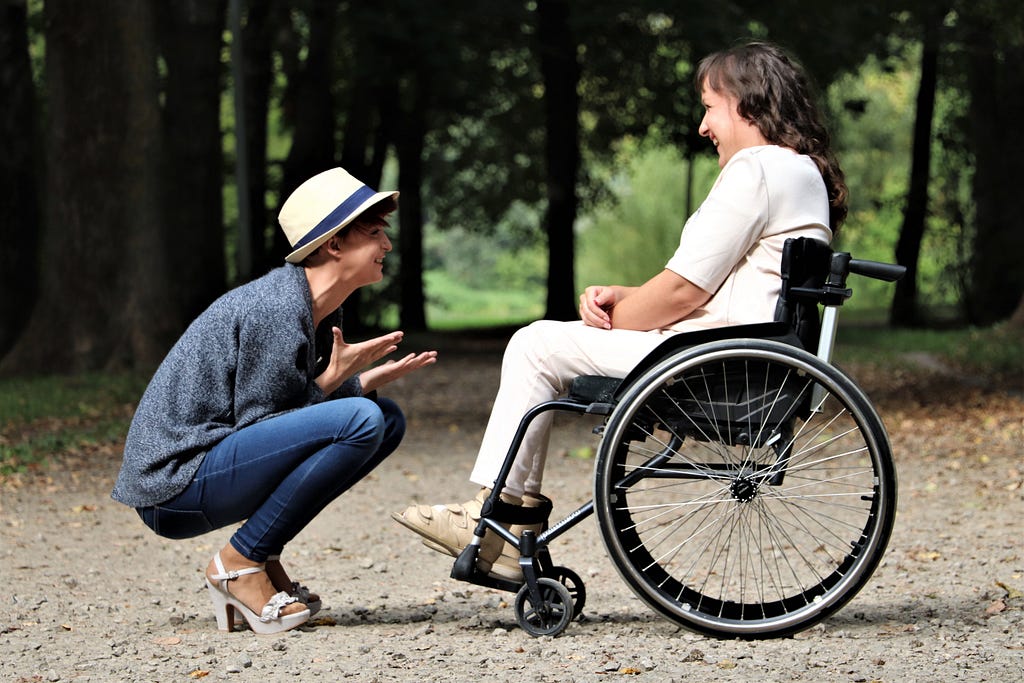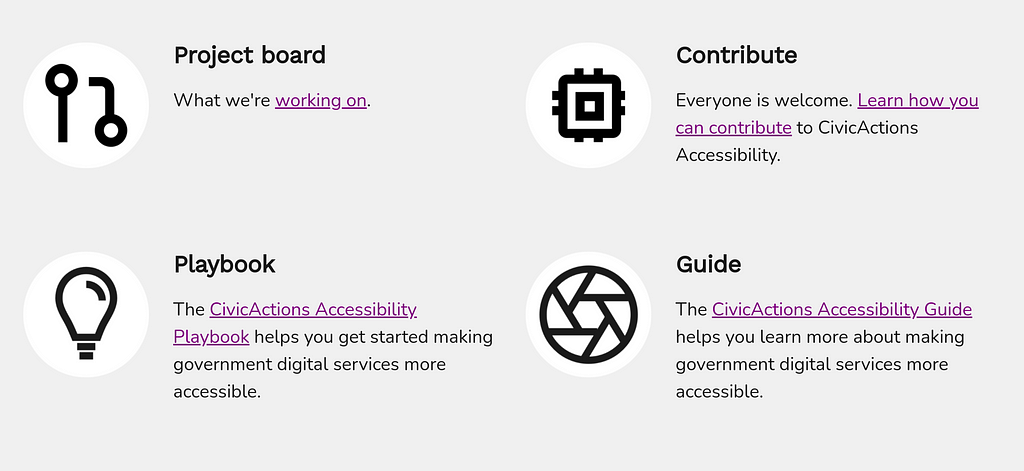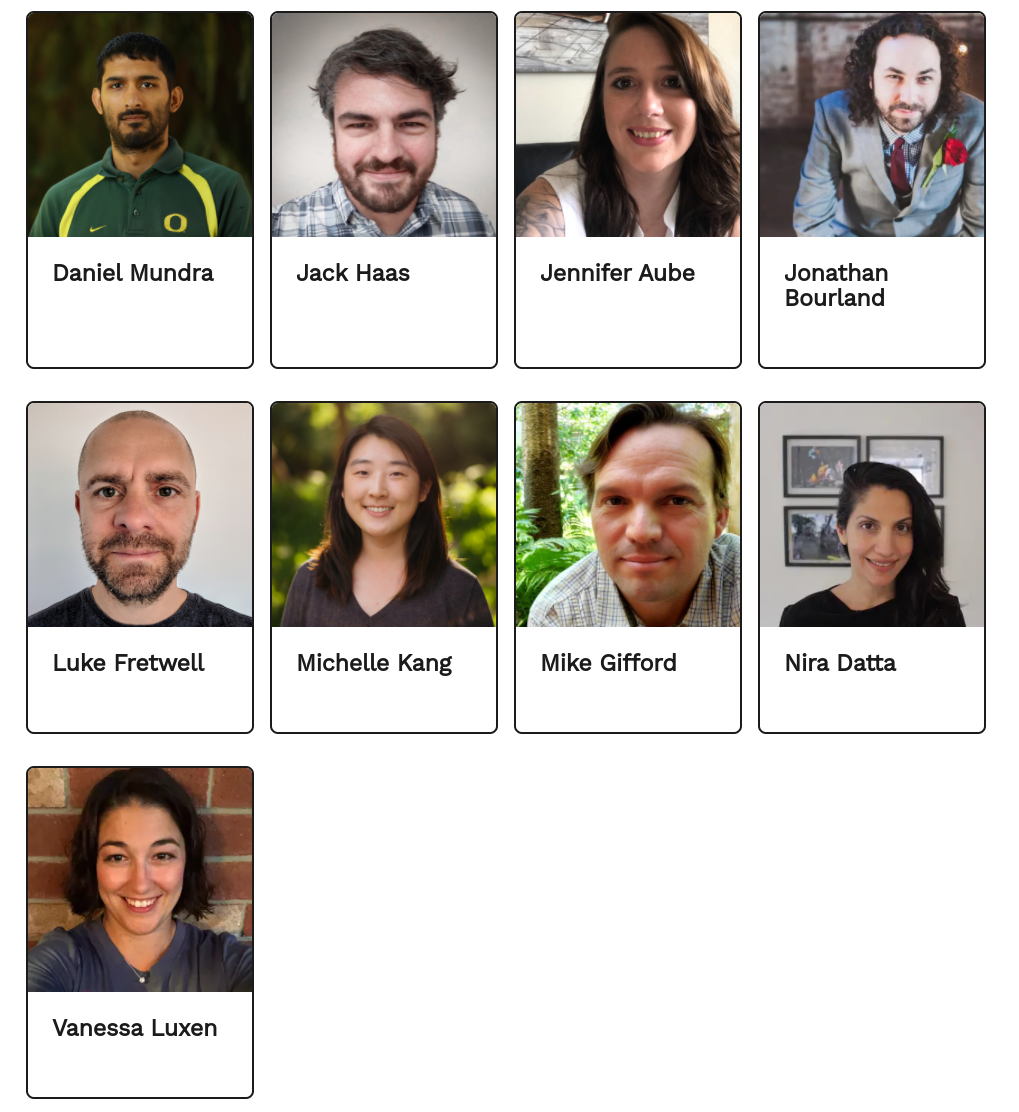On Global Accessibility Awareness Day, we're excited to be announcing the launch of our initiative to advance accessibility awareness and best practices in government digital services.
 Photo by Porapak
Apichodilok
from Pexels
Photo by Porapak
Apichodilok
from Pexels
People tend to think of disability as a characteristic of a person. But often, the mismatch between design and the person is what causes the disability. In today's tech-driven world, designing and building for people with different abilities enables more of society to access essential services. It makes for a more inclusive world.
Creating accessible websites is a growing priority within the [Biden Administration's] government. But accessibility goes beyond compliance requirements. It's something we can consider at every step of a service, holistically across government, to benefit the greatest possible number of people.
That's why we launched the CivicActions Accessibility Practice Area, to establish a community of learning and growth around accessibility best practices. It's something we all need to work on, from the vendors building digital services to the agencies delivering them to the public. And this work is never "done" — we know there is always more to do, and we invite everyone to do it with us.
Building a foundation for accessibility best practices
We're working on embedding accessibility into our offerings by:
- Developing a proactive, interactive process to make government services accessible to everyone, called the Holistic Enterprise Accessibility Review Technique (HEART)
- Incorporating accessibility into our human-centered design process at CivicActions, ensuring that our design practices integrate accessibility into our client work
- Building accessibility personas to drive our design thinking, and building our 'designer's accessibility toolkit' with templates to guide each phase of the decision making process
- Exploring how we might incorporate plain language service training
- Creating recommendations on how to structure project teams to include accessibility from the start
- Integrating accessibility into our processes and workflows, including company materials like our handbook, contracts, and proposals
 Photo by Judita
Tamošiūnaitė
from Pexels
Photo by Judita
Tamošiūnaitė
from Pexels
We're passionate about fixing problems "at the source", which has led us to focus on improving legacy procurement — right where many accessibility problems begin. We're currently developing an open, machine-readable template to help organizations show how well their product meets accessibility standards. It's our version of the current standard, known as Voluntary Product Accessibility Template (VPAT). We hope it will provide a better alternative for agencies looking to accurately gauge the accessibility of the products they are considering.
Creating a community hub for accessibility
To help build enthusiasm and education around accessibility, we developed an open source website with resources and best practices. It serves as a digital hub for our growing community.
We're already seeing a growing interest in the conversation on improving the accessibility of government services. We've presented at the General Services Administration (GSA) Accessibility Guild and the GSA has incorporated our automated testing solution on their website.
We're also talking about:
- Why we need accessibility compliance as code
- How to integrate accessibility early and throughout your process
- Why anchor links are a must for government agencies
- How to run automated testing on your GitHub-hosted Jekyll site
- Why open-source collaboration is key to busting silos
We're using and building on a range of government accessibility sources including the United States Web Design System (USWDS), 18F, and the UK's Government Digital Services. We're beginning to influence the conversation too (our automated testing solution is now part of 18F's playbook). This just shows how we can all work together to build a stronger global community of digital services professionals who all want to make a more accessible world.
Building capacity in our own organization
It can be difficult informing busy professionals about accessibility. To adopt new ways of thinking and working as an organization, you have to embed accessibility as part of the culture. So our community of practice also serves as an internal accessibility support team. We want to make it easier for our colleagues to grow their knowledge and expertise. To drive internal education, we:
- Maintain an accessibility playbook and guide with a focus on open source solutions serving government
- Promote and educate about solutions that are relevant, scalable, and reliable
- Treat accessibility questions within the organization like a customer support ticket, making it easy for our colleagues to ask questions and get help
- Run an accessibility study group within the organization to develop professional skills in accessibility (and work towards certification)
- Host a Slack channel to discuss current events and articles on accessibility
 The
community of practice helps us build a culture of accessibility in our own
organization and beyond.
The
community of practice helps us build a culture of accessibility in our own
organization and beyond.
Collectively, this helps us build accessibility confidence within the organization, so CivicActioners can more readily apply it to projects.
Measuring success
There are plenty of metrics to measure how we're advancing our mission. As we ramp up, we are strategically choosing to measure our success through:
- Impact through our new accessibility site, which is emerging as a useful resource and establishing credibility
- Growth of accessibility as a service that we provide to the government, as evidenced by the number of submissions on our contact form and traffic to the accessibility service pages (which we'll be publishing soon!)
- Expansion of our practice area, specifically by the number of members and engagements in weekly meetings
- Increase of feedback on our accessibility statement, which helps us understand how we can better meet the needs of our visitors.
 Some folks in the
CivicActions Accessibility community of practice.
Some folks in the
CivicActions Accessibility community of practice.
How we work
Nobody has all the answers. That's why we work in the open. We believe this is the best way to improve our practices. We work in an agile environment and use GitHub to drive innovation through open development.
Collaborate with us
Want to work with us? Have ideas on how we can improve? Please reach out.
Learn more
- Challenges in automating accessibility
- Writing impactful accessibility reports
- Accessibility initiatives from the White House
- How open source tools improve accessibility for government
- Tools to help government web authors make accessible content
Launching a community of practice for accessibility in government services was originally published in CivicActions on Medium, where people are continuing the conversation by highlighting and responding to this story.

